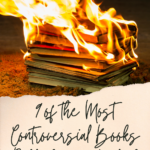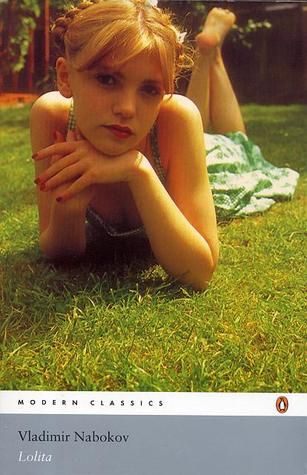The same can’t be said of the works I’ve collected below. I tried to select books which caused real and widespread outrage at the time they were published, often becoming embroiled in obscenity trials or posing serious risk to the publisher and author. This list is for English titles. However, I couldn’t write an article on “most controversial books” and not include one absolute standout: the Marquis de Sade’s horrifyingly gory 120 Days of Sodom. Written in 1785 while he was imprisoned in the Bastille, it was published in its unfinished form in 1904. The book focuses on four wealthy, hedonistic men whose lives descend into an orgy of increasing depravity, including paedophilia, coprophagia, and extreme torture culminating in murder. It’s no surprise that de Sade himself called it “the most impure tale that has ever been told since the world began.” One last note: due to the nature of this article, I have not made a point of showcasing authors from marginalised backgrounds, as I would ordinarily. As you can see from the years in which these books were published, it’s becoming harder and harder to publish “controversial” books. The stratospheric rise of indie publishing, as well as the relaxation of obscenity and vulgarity laws, has eroded many of the old arguments for banning books. Nowadays, books are more likely to attract negative publicity not necessarily for obscene content, but if their authors are perceived to have included other types of offensive material. The criticisms of Amelie Wen Zhao’s novel Blood Heir is one example; she was accused of having written scenes with racist connotations and ended up rewriting her book based on the criticism. One feature of the novel is fictionalised dream visions of the Prophet Muhammad’s life, and this is where the controversy comes in. The title is taken from an incident in the book where the Prophet apparently receives a revelation from Satan, mistaken for God, telling him to worship al-Lat, al-Uzzat, and Manat. The three are goddesses from polytheistic pre-Islamic times. Other events in the book which have caused offence are a scene where a number of prostitutes dress up as the Prophet’s wives, and a companion of the Prophet who declares that he’s changed parts of the Quran he was doubtful about as it was dictated to him. The book received positive critical reviews, being shortlisted for the Man Booker Prize. Harold Bloom also called it “Rushdie’s largest aesthetic achievement.” However, many Muslims viewed the book as blasphemous. In 1989, Ayatollah Khomeini of Iran issued a fatwa (with highly suspect, potentially political rather than religious motivations) ordering Rushdie’s death; though this lapsed in 1998, it remains technically in existence. Rushdie was subjected to police protection. Numerous bookstores in both the U.S. and UK were bombed, demonstrators led book burnings, and many countries in the east banned the book wholesale. There have been deaths: some of the demonstrations were fatal, and Rushdie’s Japanese translator Hitoshi Igarashi was murdered in 1991. The Italian and Norwegian translators have also been seriously injured. It would clearly be difficult to overestimate the degree of controversy caused by the book’s publication. However, things have changed significantly in the intervening 30-odd years. Though The Satanic Verses is still notorious, it generally fails to induce the same level of anger; the fatwa is essentially inactive, by Rushdie’s own account, and there have been no significant development for at least five years. Compared to The Satanic Verses, the international reaction might seem muted. Britain and France both banned the book, but for no more than a few years each. Interestingly, though, unlike the other books on this list, the controversy surrounding Lolita has arguably grown (in some areas) rather than diminished as time has passed. It’s an exquisitely written book, full of literary allusions and beautiful prose. However, the subject matter is of course very disturbing, and I think it’s fair to suggest that modern readers are more sensitive to the sexual abuse of Lolita than 1950s readers might have been. Many 20th century critics, such as Lionel Trilling, found Humbert a sympathetic character, and did not dispute his own claims that Lolita initiated their relationship; in recent decades, however, critics have pointed out how unreliable Humbert’s narration is, and many have explicitly called him out as a rapist – something less common in the wake of its direct publication. The book has often been challenged for its portrayals of sex, language, and violence, common complaints when it comes to young adult literature. It’s been banned (at one point or another) in at least fourteen states and challenged in a score of others. The most recent of these seems to have been in 2007. Though things have calmed down since then, Cormier was, in general, a controversial author. His books were criticised many times for their content, but his own response was that “the kids can absorb my kind of book because they know this kind of thing happens in life.” Tropic of Cancer was published in 1934 and is a semi-autobiographical account of Miller’s life, featuring numerous explicit sex scenes. The original publication was in France; the U.S. Customs Service banned its import, and legal attempts to have Miller recognised as a “serious writer” failed. The book was not published in America until 1961, by Grove Press. Immediately, there were scores of lawsuits, with 60+ suits being brought in 21 states over booksellers who stocked it. A number of state courts ruled it obscene and upheld the ban, but it went all the way to the Supreme Court in 1964, where Grove Press eventually prevailed in the case Grove Press, Inc vs Gerstein. Since then the novel has frequently been cited as one of the best works of literature of the 20th century. Though Canada and Finland banned the book as well, there was – perhaps surprisingly – limited backlash from other countries. The UK eventually decided not to ban the book, mostly because many prominent literary figures (including T.S. Eliot) were willing to advocate for its merits. In any case, the UK had its own obscene books to worry about, which brings us to… I can personally confirm that on a literary level, this book is rubbish. It’s boring, underdeveloped, and overuses the words “bowels” so many times that if you had a pound for each instance, you’d be Jeff Bezos. Being banned in six countries though – the UK, Australia, Canada, Japan, the U.S., and India – seems a little harsh. The unexpurgated version could not be published in the UK until 1960, 30 years after Lawrence’s death and 32 years after it was first published in Italy. This gave rise to the landmark R v Penguin Books Ltd trial, which tested the newly-passed Obscene Publications Act 1959. If it could be proven the work had “literary merit,” it would be allowed to pass unscathed; a range of witnesses, including E.M. Forster and Raymond Williams, were called to testify. It was eventually judged “not obscene” and this paved the way for the relaxation of publication law. Nowadays, of course, it’s not very controversial at all. Nor should it be, since a book that bad deserves nothing but obscurity – in my humble opinion. That’s all down to the book’s portrayal of teenage sex and sexuality. Eighteen-year-old Katherine and her new boyfriend, Michael, are aware that sex is something which they will have to navigate in their relationship; their frank discussions of losing one’s virginity, as well as Katherine’s use of birth control, has led to the novel being banned in numerous secondary schools. While it’s no longer as controversial – numerous YA novels nowadays centre portrayals of safe sex – it remains mildly notorious for its historical associations with illicit reading. Interestingly, however, there’s also a bit of publishing controversy here. Its history is quite involuted: there were over 18 editions, each one striving to correct the errors of the previous version (the first edition had over 2000 errors), but often adding more in the process. The 1984 edition by Hans Gabler was one such edition. His attempt to create a perfect text involved accreting numerous versions and manuscripts from different places, leading to a lot of erosions and textual ambiguity. Critics accused him of wildly departing from Joyce’s original intentions, as well as of having been motivated by a desire to secure a new copyright and the associated royalties. This came to a head in 1988, when John Kidd published an article in The New York Review of Books accusing Gabler of having made at least 2000 mistakes and – in some places – not even following any manuscripts when creating his own edition. Gabler’s treatment of Joyce’s spelling, punctuation, and accents all came under fire. Some of the mistakes were truly egregious, such as changing Harry Thrift (the name of a real person) to “Shrift.” All in all, Kidd ended up filling 174 pages with criticisms of Gabler. The edition was eventually withdrawn from publication in the 1990s. Unlike most of the other novels on this list, this one was back in the news again recently for a newer controversy, too. Seyi Omooba, a Christian actress, had originally been cast to play Celie in a production of The Color Purple held by Leicester’s Curve Theatre in 2019; she was ultimately dropped due to homophobic comments she had allegedly posted on Facebook. She subsequently chose to sue the theatre, claiming religious discrimination and a breach of contract. Critical acclaim has been widespread since it first came out. Personages as exalted as Bill Gates have called it one of their favourite books. This level of praise, however, has been accompanied by an almost equal level of criticism. (Amusingly, in 1981 it was simultaneously the most-taught and second-most-censored book in American high schools). Reasons for censorship include sexual references, blasphemy, vulgarity, and an apparent subversion of family and moral values. What many fail to realise is that Salinger himself originally intended the novel for an adult audience. Even more controversially, the book has been directly associated with a number of violent incidents. Most famous is the shooting of John Lennon in 1980 by Mark David Chapman, who so strongly identified with Holden Caulfield that he brought a copy during the murder and read a passage from The Catcher in the Rye at his court sentencing. He also called the book “his statement” and reportedly expressed a desire to change his name to Holden. John Hickley Jr, who attempted to assassinate President Ronald Reagan the following year, explicitly cited Chapman as his inspiration, and Robert John Bardo also had a copy on him when he murdered actress Rebecca Schaeffer in 1989. Looking to start an argument in your book club with some newer controversial reads? Try one of these!
























